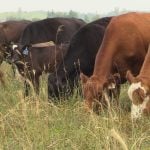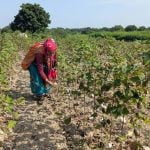Agronomists are finding swede midge in Prairie canola fields. Add this new pest to your 2013 field-scouting list
The Swede midge, a gall midge native to Europe and Asia, was first identified in Ontario in 2000. In Europe, Swede midge is a common threat to cruciferous vegetable crops like broccoli, cabbage and cauliflower. Its first discovery in Ontario was in vegetable crops, and it has been closely monitored since because of its potentially […] Read more


